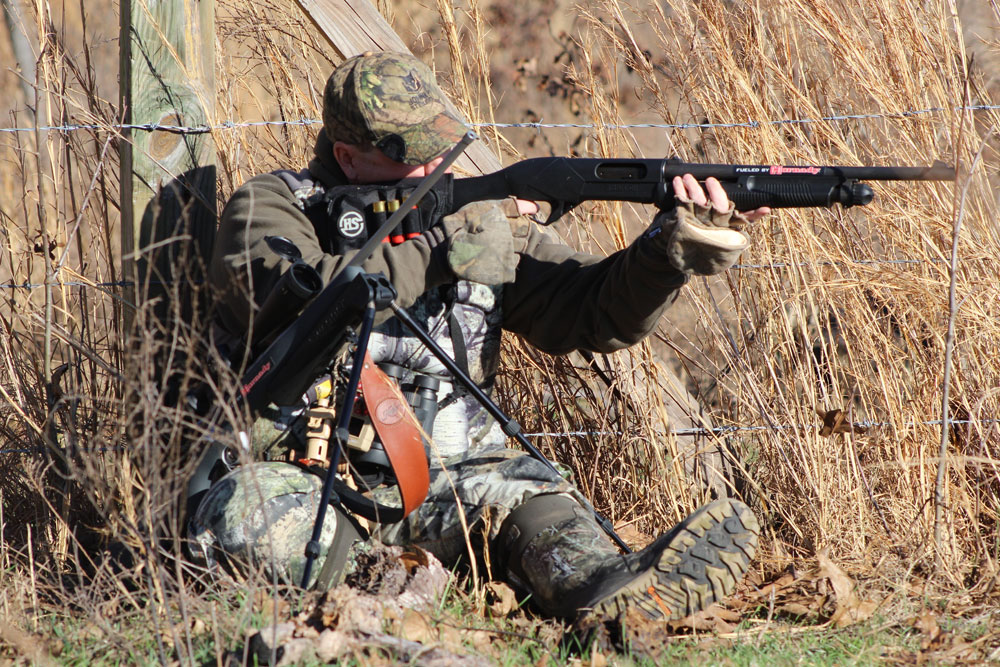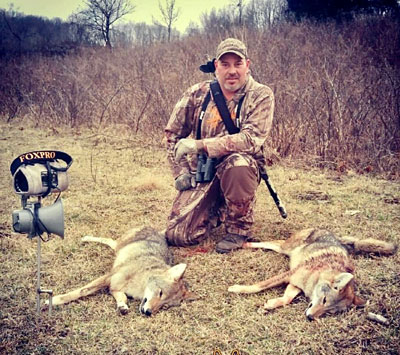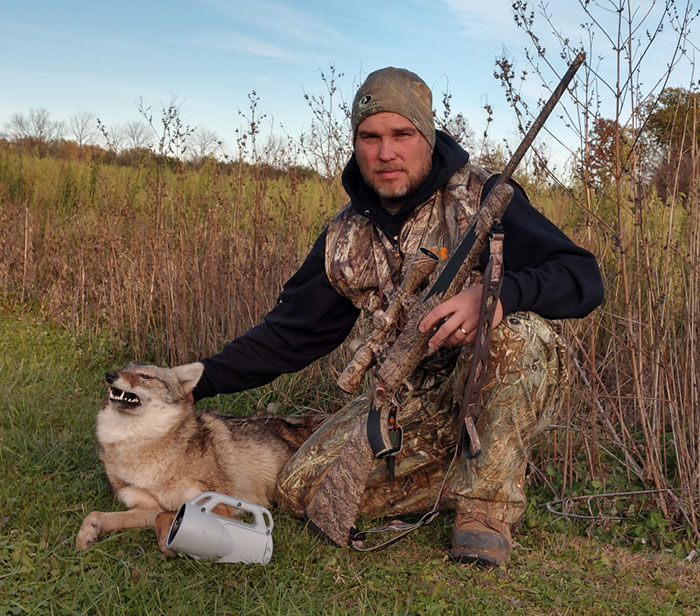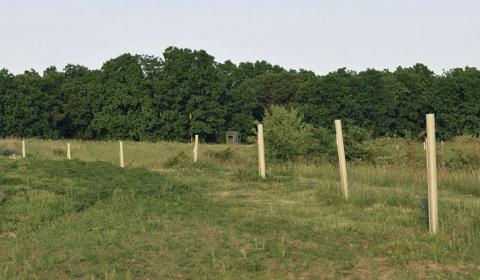Heath Wood

While watching an educational turkey hunting video several years ago, I can recall veteran turkey hunter Eddie Salter saying that when he was calling in a gobbler and things seemed to quiet down, and it appeared that there was nothing else to be done to bring him in, he would wait 5 minutes longer. Salter said that on many occasions after the additional 5 minutes, the gobbler would show up, and he would make the harvest.
On many occasions over the years, I have witnessed the same theory while calling coyotes. When things seem to be over, there is no chance of a coyote coming in, and I am about to move to the next spot, if I wait a few more minutes a coyote will appear.
As a predator hunter, I have adapted to a faster-paced style of calling when solely focusing on coyotes. After 15 to 20 minutes, if nothing has shown, I am ready to pack my stuff and head to the next stand. However, there are times when a predator hunter should be more patient and stay on stand a few minutes longer to bring a coyote into shooting range. I have primarily found this true during February and early March when coyotes are in full swing of the breeding season. On many occasions, when calling during this time of year, a coyote would not appear until I was ready to give it up. After I began realizing this, I had to ask myself if I was missing coyotes by leaving too early, and if this was the case, what is a more appropriate time to stay on the stand during the breeding season.
Veteran predator hunter and Houston, Missouri, native Corey Groff agrees that one can benefit themselves by staying on stand for a more extended period during this time of year. Groff, a long-time field staff member of FoxPro, says that he changes his average stand time of 15 to 20 minutes to at least 30 minutes or longer due to the breeding season influencing coyotes’ response to the call.
“A lot is going on during the breeding season,” said Groff. “During the breeding season, which is usually somewhere around February, coyotes have experienced a lot of pressure from other hunters; they are tired from the 20 or so days of what I call the heat of the breeding season.”
He then added, “With coyotes who have been pressured and those who are exhausted from the dogging of breeding season, they take more time to come to a call. Therefore, I will stay on stand longer than normal. Give them time to get there.”

Not only does sitting on stand longer help, but one must change up his or her calling sequences slightly, as well as what time of day to hunt altogether. Groff says he prefers only to hunt early mornings and evenings during the breeding season.
“During the heat of the breeding season, coyotes move more at night, and it’s almost like they don’t want to be seen during daylight hours. I think they don’t move through mid-day for that same reason, so I don’t hunt through the day like I normally would.”
Groff says he only hunts early mornings and evenings during this time. Being that coyotes have been up all night doing their thing. They are like humans; they are a little slow to respond the next morning. Therefore, Groff elects to stay on stand longer, because they take more time to move.
Another technique to change as a result of breeding coyotes is the selection as well as the sequence of sounds that are used when calling. As a result of coyotes in search of a mate for breeding purposes, many predator hunters use an array of coyote vocals to help lure in lovesick coyotes. Groff agrees that he, too, uses more vocals such as howling and female whimpers but urges hunters not to forget the distress sounds.
“Coyotes use a lot of different vocals during the breeding season; however, they still have to eat to survive,” said Groff.
Even though Groff’s average time on the stand of 15 to 20 minutes has been moved to 30 minutes or longer, his pace of calling seems to slow down as well. Not calling as often yet calling through a more extended period seems to be more successful during this time.
“I will use a combination of vocals and distress sounds, switching back and forth from the two,” said Groff. “Instead of playing a sounds for a few minutes at a time as normal, I will play a few vocals for 30 seconds or so, then wait 3 to 5 minutes, then play some distress sounds for a short period, then pause again for a few minutes, then towards the end of the 30-minute set I will throw in some female whimpers now and then to grab a coyotes attention more.”
By taking his time and not overplaying his sounds, Groff allows time for slow approaching coyotes to stay curious and anxious enough to be able to come into shooting range.
Here’s an additional reason that one might want to stay on stand longer than usual after harvesting a coyote early. It is easy for the hunter to call in a coyote with the first few minutes of a stand only to stop calling when he or she makes the harvest. During the breeding season, it is common for coyotes to be in pairs or to have other coyotes lingering behind closely in hopes of finding a mate themselves. Therefore, it is a good idea to stay still and continue calling if a harvest is made early. Groff says that when he makes an early harvest, he will mute his calling for 5 to 10 minutes while staying still. Then he will continue in with his calling sequence. On many occasions, a second or third coyote will respond to the same area.

Mossy Oak ProStaffer Steven Reinhold of Ohio also agrees that there are times when a predator caller should be patient and make a more extended stand. Even though Reinhold makes quicker stands that usually consist of around 15 minutes, he says that one of those times when he will stay longer is when coyotes are vocal or if he can physically see them in the distance.
During the months of the breeding season, coyotes use several different types of vocals to communicate with each other such as howls, whimpers, and whines. When Reinhold hears these sounds while trying to call, he elects to slow it down and be more patient.
“On several occasions, I have had coyotes hang up or being vocal in the distance. When they do, I will use my electronic caller every 3 to 4 minutes until I get a response,” said Reinhold. By being patient and trusting his calling, Reinhold has harvested several coyotes by being consistent in calling and being more patient on stand.
The months of January, February, and March can all be excellent times for the predator caller. The breeding season for coyotes means they can easily be distracted, simply because they have a lot going on in their life at this time. This time for predator hunters can be challenging and distracting at times. However, if a few changes are made, such as choice of calls, when to hunt, and being more patient while staying on stand, they too will see why many look forward to this time of year and the successful yet enjoyable time it can produce while in the field.



























